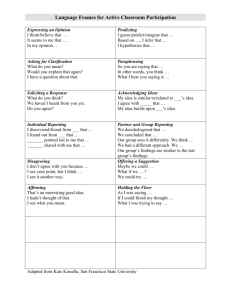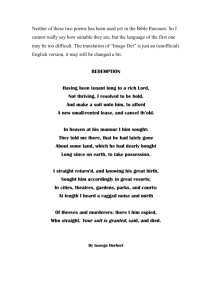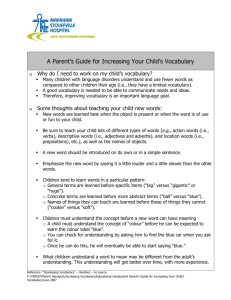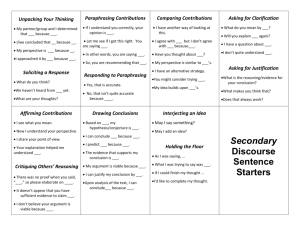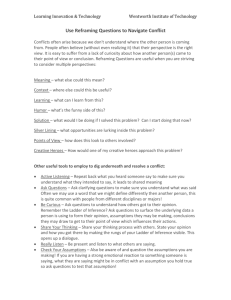Academic Talk
advertisement
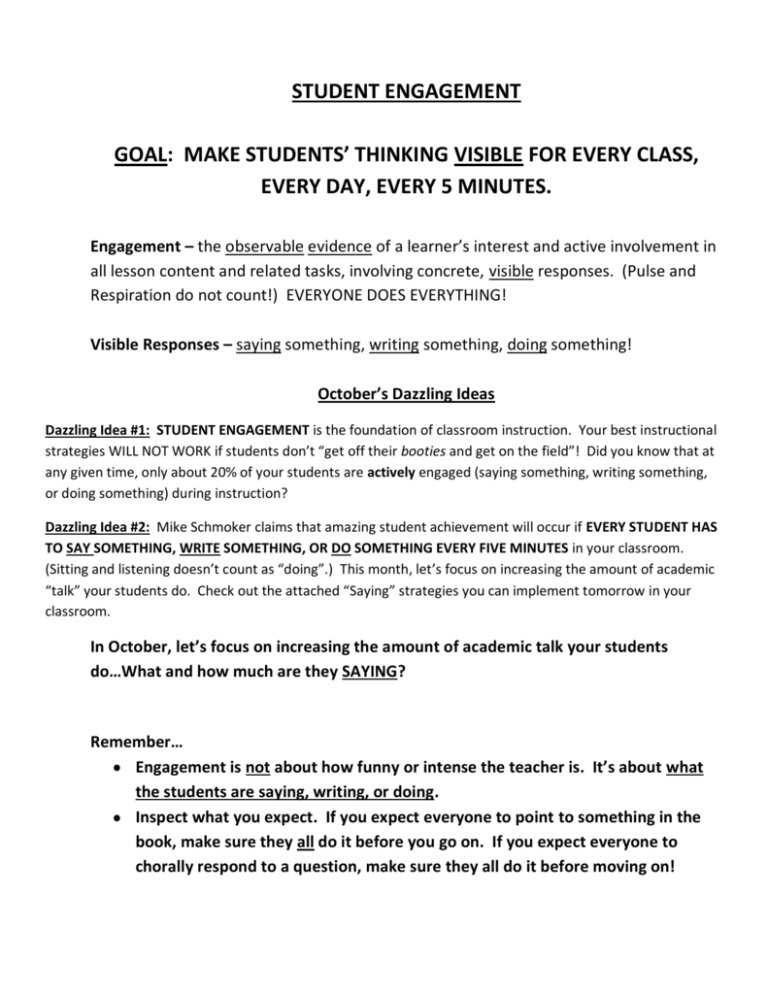
STUDENT ENGAGEMENT GOAL: MAKE STUDENTS’ THINKING VISIBLE FOR EVERY CLASS, EVERY DAY, EVERY 5 MINUTES. Engagement – the observable evidence of a learner’s interest and active involvement in all lesson content and related tasks, involving concrete, visible responses. (Pulse and Respiration do not count!) EVERYONE DOES EVERYTHING! Visible Responses – saying something, writing something, doing something! October’s Dazzling Ideas Dazzling Idea #1: STUDENT ENGAGEMENT is the foundation of classroom instruction. Your best instructional strategies WILL NOT WORK if students don’t “get off their booties and get on the field”! Did you know that at any given time, only about 20% of your students are actively engaged (saying something, writing something, or doing something) during instruction? Dazzling Idea #2: Mike Schmoker claims that amazing student achievement will occur if EVERY STUDENT HAS TO SAY SOMETHING, WRITE SOMETHING, OR DO SOMETHING EVERY FIVE MINUTES in your classroom. (Sitting and listening doesn’t count as “doing”.) This month, let’s focus on increasing the amount of academic “talk” your students do. Check out the attached “Saying” strategies you can implement tomorrow in your classroom. In October, let’s focus on increasing the amount of academic talk your students do…What and how much are they SAYING? Remember… Engagement is not about how funny or intense the teacher is. It’s about what the students are saying, writing, or doing. Inspect what you expect. If you expect everyone to point to something in the book, make sure they all do it before you go on. If you expect everyone to chorally respond to a question, make sure they all do it before moving on! Saying Something Related to Instruction Instead of: Try this: Asking a question and having students raise their hands to respond … (You’ll usually get only about 20% of your students to volunteer answers.) Expect a whole-class choral response (from EVERYONE) Asking, “Does anybody know…” or “Who can tell me…” o Students number off 1 and 2 and partner up; sometimes 1’s speak first, sometimes 2’s Structure Precision Partner responses: o One partner speaks and the other paraphrases his answer o Students take turns orally completing a “Sentence Frame” provided by the teacher. (Example: “One cause of the Civil War was ______________”, or “Some of Irene’s character traits in the story are ________”.) o Turn-to-Your Partner, Think-Pair-Share, Whip Around the Table, etc. Randomly call on students (no hand raising) by drawing popsicle sticks or using another random selection process; scaffold students who can’t answer right away, but don’t let them off the hook. Expecting only a phrase for an answer to a question… (Teacher asks, “What does the word ‘portray’ mean in this sentence?” Student answers, “To show or represent”.) Expect students to answer a question in a complete sentence, using academic vocabulary (Teacher asks, “What does the word ‘portray’ mean in this sentence?” Student answers, “The word ‘portray’ in this sentence means to show or represent”.) Provide a “sentence frame” for students (see above) to model the structure of a good, complete answer. (Sentence frame written on the board: “The word ‘portray’ in this sentence means ________________.”)

